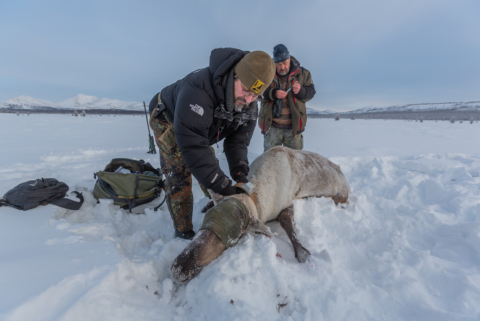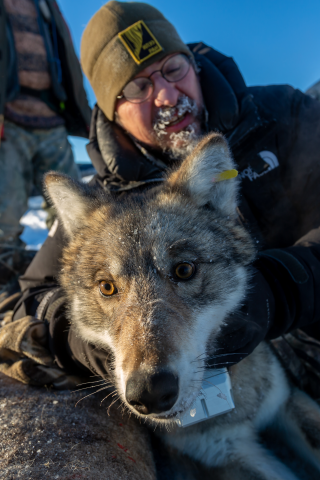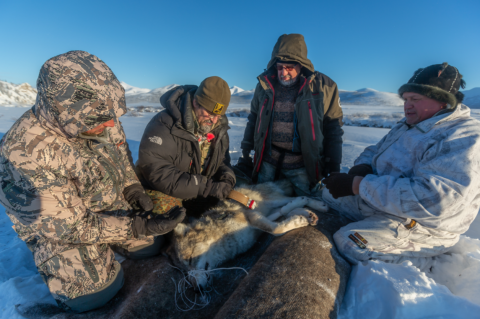
In early December, Jose A. Hernandez-Blanco and Taras Sipko, members of the IEE RAS, together with the Expedition-Tour company and the financial support of Igor Dontsov, completed the next stage of the expedition to study the behavioral ecology of the wolf and ungulates of Kolyma.

The work was carried out in the upper reaches of the Korkodon and Omolon rivers. In these harsh and hard-to-reach places with high snow cover and temperatures around -40°C, a safe and highly effective method of catching wolves, Kolyma elk, reindeer and bighorn sheep was developed to provide them with GPS-Iridium satellite collars, collect samples for molecular genetic studies and make an assessment of the physiological state.

During the work, zoologists caught a she-wolf, a male elk, a male reindeer and two bighorn sheep of both sexes. All satellite transmitters are working, regularly collecting data on the location of animals every hour. These data will allow specialists from the IEE RAS to identify the nature of the use of the location of tagged individuals, their dynamic interactions, and such important aspects of wolf ecology as the distribution of successful hunts in time and space.
In the future, experts plan to collect data on eight families of wolves and their potential prey in this way. The use of telemetry and other modern remote methods for studying the wolf and large ungulates of the Kolyma will fill the gaps in our knowledge about the biology of these species in the northeast of Russia. In addition, regional authorities have shown interest in assisting with such studies.
